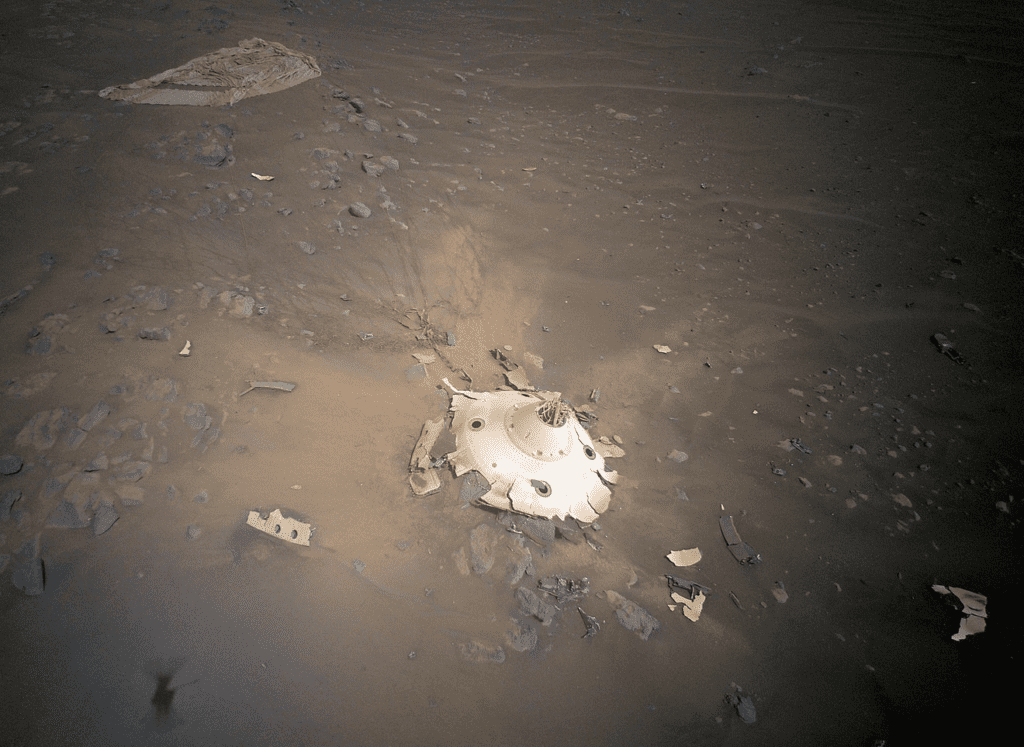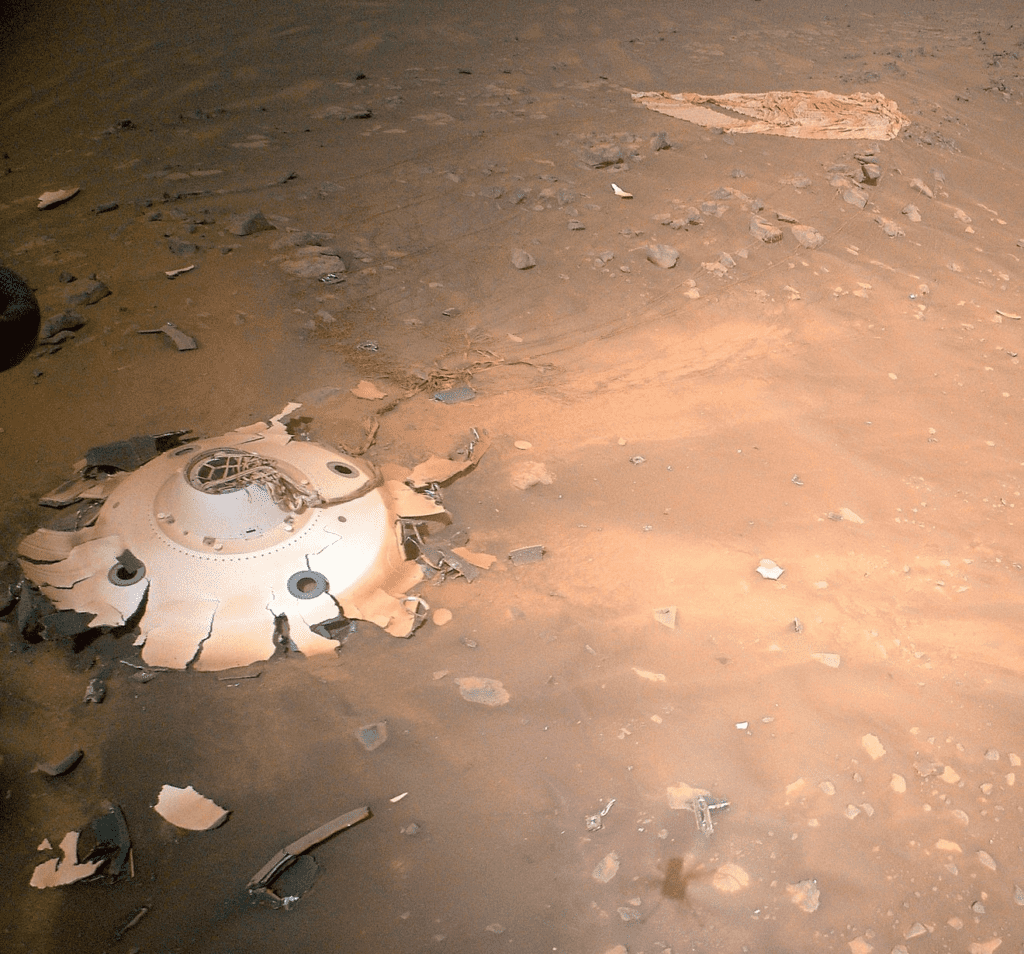About a year and two months ago, on Feb. 18, 2021, NASA’s Perseverance rover and the Ingenuity Mars Helicopter both parachuted and landed on Mars. It was a risky and stressful operation — both for the equipment and for the engineers supervising this from Earth — but it succeeded. Now, Ingenuity has photographed the original landing site from above, which could help guide the success of future missions.

Ingenuity has way-way-way surpassed expectations. The mission’s only main goal was to see whether a helicopter could actually fly in the rarefied Martian atmosphere. Then, NASA wanted to see whether it could fly a couple of times. Then, a couple of times more. Now, it’s just roaming Mars along with its land-based rover, Perseverance.
It wasn’t by chance that the helicopter looked at the landing site. The Ingenuity team was asked to aid the joint mission between NASA and the ESA (European Space Agency), which will haul material collected by Perseverance back to Earth. The unique capability of the Ingenuity helicopter can offer valuable information for the planning of this mission.
“NASA extended Ingenuity flight operations to perform pioneering flights such as this,” said Teddy Tzanetos, Ingenuity’s team lead at NASA’s Jet Propulsion Laboratory in Southern California. “Every time we’re airborne, Ingenuity covers new ground and offers a perspective no previous planetary mission could achieve. Mars Sample Return’s reconnaissance request is a perfect example of the utility of aerial platforms on Mars.”

The images, NASA researchers say, could help make future landings to Mars safer. Perseverance and Ingenuity entered the Martian atmosphere at about 12,500 mph (20,000 kph), using a parachute to slow their descent — but the backshell that carried the parachute still crashed into the surface of the Red Planet at about 78 mph (126 kph). Remarkably, the backshell’s protective coating appears to have remained intact during the atmospheric entry.
By documenting how well these elements survived this process, engineers can tweak and adapt future missions to make them more resilient. We’ve already seen this with the current mission (which greatly benefitted from previous insights), but now, there’s also the added benefit of airborne images.
“Perseverance had the best-documented Mars landing in history, with cameras showing everything from parachute inflation to touchdown,” said JPL’s Ian Clark, former Perseverance systems engineer and now Mars Sample Return ascent phase lead. “But Ingenuity’s images offer a different vantage point. If they either reinforce that our systems worked as we think they worked or provide even one dataset of engineering information we can use for Mars Sample Return planning, it will be amazing. And if not, the pictures are still phenomenal and inspiring.”
A new operation zone

It took a lot of careful maneuvering to reach this position, not just during this flight, but on previous flights as well. Now, Ingenuity is operating in a new area: the Jezero Crater’s dry river delta. Yes, a delta because a river used to run there, which immediately makes it an interesting place for investigation. The delta is several miles wide and fan-shaped, marking the site where the ancient river spilled into a lake that used to fill Jezero Crater.
“We’ve been eyeing the delta from a distance for more than a year while we explored the crater floor,” said Ken Farley, Perseverance project scientist at Caltech in Pasadena. “At the end of our fast traverse, we are finally able to get close to it, obtaining images of ever-greater detail revealing where we can best explore these important rocks.”
Ingenuity will now act as a scout for Perseverance, eyeing which of two dry river channels is easiest to climb to reach the top of the delta. In addition to offering logistics information, Ingenuity will look for the most interesting scientific targets, and may even be used to study geological units from the area. Not bad for a helicopter that was only meant as a proof of concept, eh?









